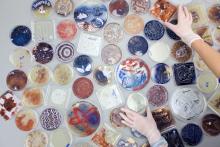Notes Toward Generative AI in the University
Here is a selection of my thoughts on the ethics of teaching creative writing as a neurodivergent academic in the age of generative artificial intelligence use by students?! As a dyslexic poet and literary critic, I have an unusual relationship with language and teaching creative writing in the university setting. Which came first the poetry or the dyslexia is hard to say.

 What is "BioArt"?
What is "BioArt"?
